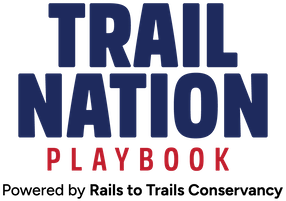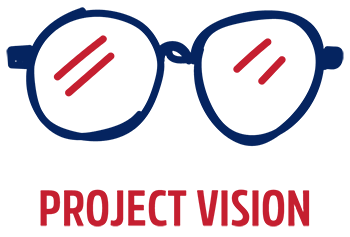TrailNation Playbook
Cleveland Foundation Centennial Lake Link Trail | Photo by Jason Cohn

Strategies for Building Trail Networks
The practices, strategies and collaboration needed to build the nation’s 40,000 miles of multiuse trails are the foundation of efforts across the country to connect this infrastructure into regional trail and active transportation networks, delivering countless benefits to communities of all sizes.
Efforts to advance trail networks require a comprehensive approach that accounts for partnership, mapping and analysis, public and stakeholder engagement, and funding. Across all strategies, the priority needs to be on equitable approaches that ensure the benefits of the trail network are realized by the communities that live nearby and that the trail network is accessible to everyone—especially people living and working in under-resourced and under-represented neighborhoods.
Rails-to-Trails Conservancy (RTC) developed the TrailNation™ Playbook to leverage the lessons learned from building trail networks across the country as resources for the trail planners, municipalities, states and regions that are seeking to advance their own regional trail network projects. The Playbook curates case studies, best practices and tools to accelerate trail network development nationwide.
Explore the Playbook
Each element of the playbook to build trail networks is integrated. While the process is not linear, each aspect plays an important role.
Establishing the vision for a regional trail network is the initial step in determining its scope and the primary impact it will deliver. The visioning process is fundamental to the overall success of any trail network.
Coalitions are critical to the success of trail networks. Designing an inclusive process to engage a broad network of partners can help to channel the energy, expertise and influence needed to grow support for and implement regional trail networks.
Converting trail network gaps—whether they are identified planned trails or more conceptual desired connections—into well-supported projects that attract investment requires strategies that leverage political, natural and economic capital.
The process of defining the trail network with geospatial data to identify open trails as well as undeveloped segments is critical to understanding the scope of a trail network, prioritizing projects within the network and developing an implementation plan that will accelerate trail network completion.
Developing and implementing a strategy that considers a variety of sources—including state, local, federal and private dollars—is essential to accelerating the completion of a regional trail and active transportation network.
Engagement is fundamental to trail network planning. It could be considered the glue that holds many of the pieces of the Playbook together—occurring at every stage of the project to build the internal cohesion, political will and public enthusiasm needed to develop trail networks, activate them and realize their potential as hubs of thriving communities.
Learn More about TrailNation
At RTC, we believe that communities are healthier and happier when trail networks are central to their design. That’s why we’re committed to connecting trails and building comprehensive trail systems that bring people together and get them where they want to go. Our TrailNation work is redefining what it means to build trail networks and what trail networks can mean for people and places. These TrailNation projects take an innovative approach to how trails and active transportation systems are built—from concept to implementation—proving the power of trails to create healthy, thriving communities.
Model Trail Network Projects:
- Baltimore Greenway Trails Coalition: MD
- Bay Area Trails Collaborative: CA
- Capital Trails Coalition: MD, VA, DC
- Caracara Trails: TX
- Circuit Trails: PA, NJ
- Great American Rail-Trail: DC, MD, PA, WV, OH, IN, IL, IA, NE, WY, MT, ID, WA
- Industrial Heartlands Trails: NY, OH, PA, WV
- Miami LOOP: FL
- New England Rail Trail Network: CT, MA, ME, NH, RI, VT
- Route of the Badger: WI





